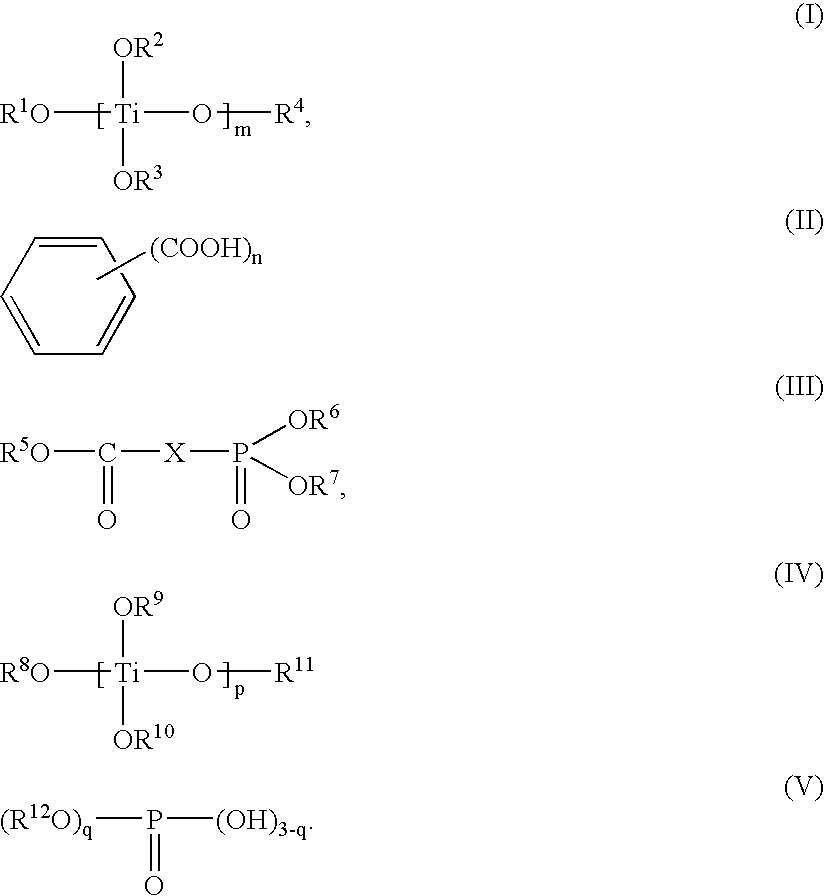Nonwoven fabric of polyester composite fiber
a composite fiber and nonwoven fabric technology, applied in the field of polyester composite fiber nonwoven fabric, can solve the problems of affecting the physical properties of the fiber, affecting the quality of the fiber, and affecting the quality of the fiber, and achieves the effects of good color tone, high l value, and high quality
- Summary
- Abstract
- Description
- Claims
- Application Information
AI Technical Summary
Benefits of technology
Problems solved by technology
Method used
Image
Examples
example 1
[0148]A mixture of 100 parts by mass of dimethyl terephthalate and 70 parts, by mass, of ethylene glycol was placed in a stainless steel vessel in which a pressurized reaction could be conducted, and 0.009 parts, by mass, of tetra-n-butyl titanate was further mixed with the mixture. The reaction mixture thus obtained was subjected to a transesterification reaction at a pressure of 0.07 MPa while being heated to temperature from 140 to 240° C., and the reaction was finished by adding 0.004 parts, by mass, of triethyl phosphonoacetate.
[0149]The reaction products thus obtained were transferred to a polycondensation vessel, and heated to 290° C., and a polycondensation reaction was conducted at a vacuum degree as high as up to 26.67 Pa to give a polyester polymer (containing no delustering agent) having an intrinsic viscosity of 0.60, a diethylene glycol content of 1.5%, and a melting point of 254° C.
[0150]The polyester polymer thus obtained was continuously extruded in the form of a st...
reference example 1
Method for Synthesizing Titanium Trimellitate
[0151]Tetrabutoxytitanium was mixed into an ethylene glycol solution containing trimellitic anhydride in a content of 0.2%, in a molar ratio of tetrabutoxytitanium to trimellitic anhydride of 1 / 2. The reactants were reacted at 80° C. for 60 minutes in the air atmosphere at the ambient atmospheric pressure. The reaction products were cooled to room temperature, and recrystallized from acetone in an amount of 10 times that of ethylene glycol. The precipitates thus obtained were collected by filtering with a paper filter, and dried at 100° C. for 2 hours to provide the target compound for catalyst.
example 2
[0152]A polyester polymer, polyester composite staple fibers and a nonwoven fabric were produced in the same manner as in Example 1, except that 0.016 parts of titanium trimellitate synthesized by the method in the above reference example was used as the titanium compound for catalyst. Table 1 shows the test results.
PUM
| Property | Measurement | Unit |
|---|---|---|
| length | aaaaa | aaaaa |
| temperature | aaaaa | aaaaa |
| temperature | aaaaa | aaaaa |
Abstract
Description
Claims
Application Information
 Login to View More
Login to View More - R&D
- Intellectual Property
- Life Sciences
- Materials
- Tech Scout
- Unparalleled Data Quality
- Higher Quality Content
- 60% Fewer Hallucinations
Browse by: Latest US Patents, China's latest patents, Technical Efficacy Thesaurus, Application Domain, Technology Topic, Popular Technical Reports.
© 2025 PatSnap. All rights reserved.Legal|Privacy policy|Modern Slavery Act Transparency Statement|Sitemap|About US| Contact US: help@patsnap.com



